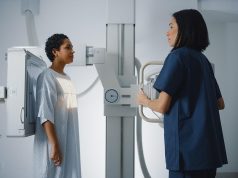Socioeconomic and regional disparities persist in the use of BRCA testing
FRIDAY, Nov. 13, 2020 (HealthDay News) — The rate of positive BRCA test results decreased over time from 2008 to 2018, according to a study published online Nov. 5 in JAMA Network Open.
Fangjian Guo, M.D., Ph.D., from the University of Texas Medical Branch at Galveston, and colleagues analyzed data from a 10 percent random sample of women aged 65 years and older (5,533 individuals) identified from the Optum Integrated Claims-Clinical data set (2008 to 2018) to assess changes in positive BRCA test results.
Of the 5,533 women (mean age, 68.1 years) who underwent BRCA testing, the researchers found that 84.6 percent were non-Hispanic White and 34.6 percent resided in the Midwest. There was a decrease noted in positive BRCA test results, from 85.7 percent (36 of 42) in 2008 to 55.6 percent (140 of 252) in 2018 (annual percentage change, −2.55). Among women with and without breast or ovarian cancer, positive test results decreased from 83.3 percent (20 of 24) in 2008 to 61.6 percent (61 of 99) in 2018 and from 87.5 percent in 2008 (21 of 24) to 48.4 percent in 2018 (74 of 153), respectively (annual percentage change, −3.17 versus −2.49). Non-Hispanic Black women and those living in the West, South, and areas with a low percentage of college graduates, as well as those with no personal history of breast or ovarian cancer, were more likely to have positive test results.
“The rate of positive BRCA test results has continuously decreased, which may be partly explained by loosening of testing criteria over time,” the authors write.
Copyright © 2020 HealthDay. All rights reserved.








